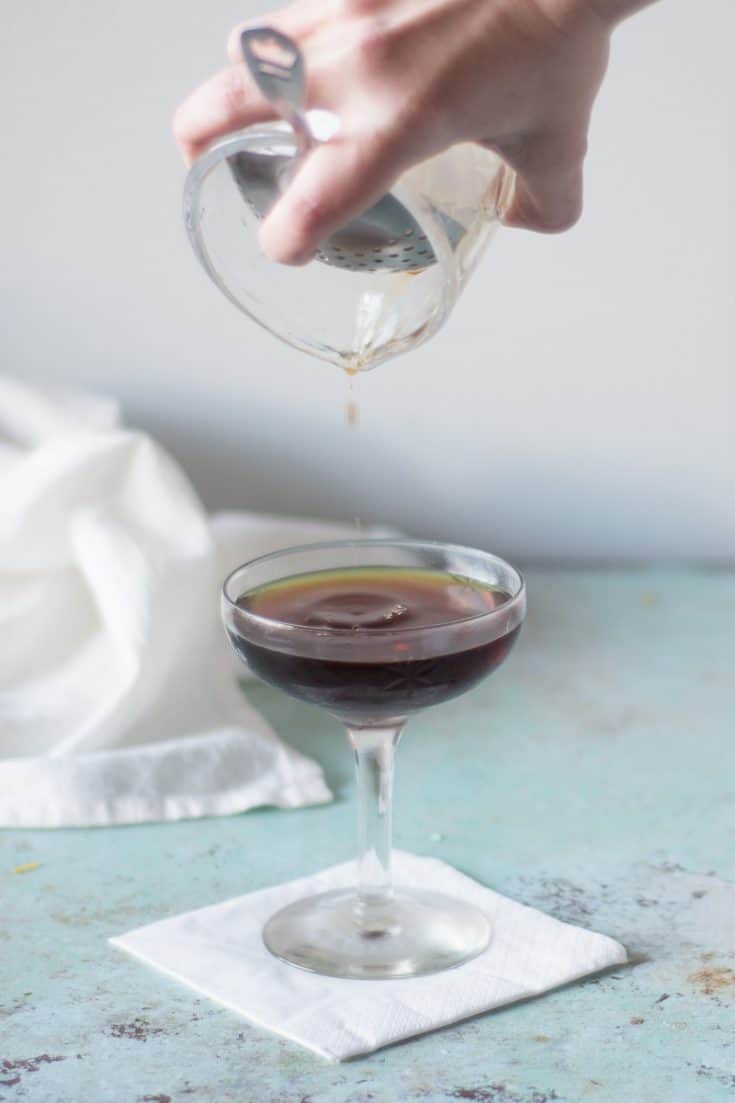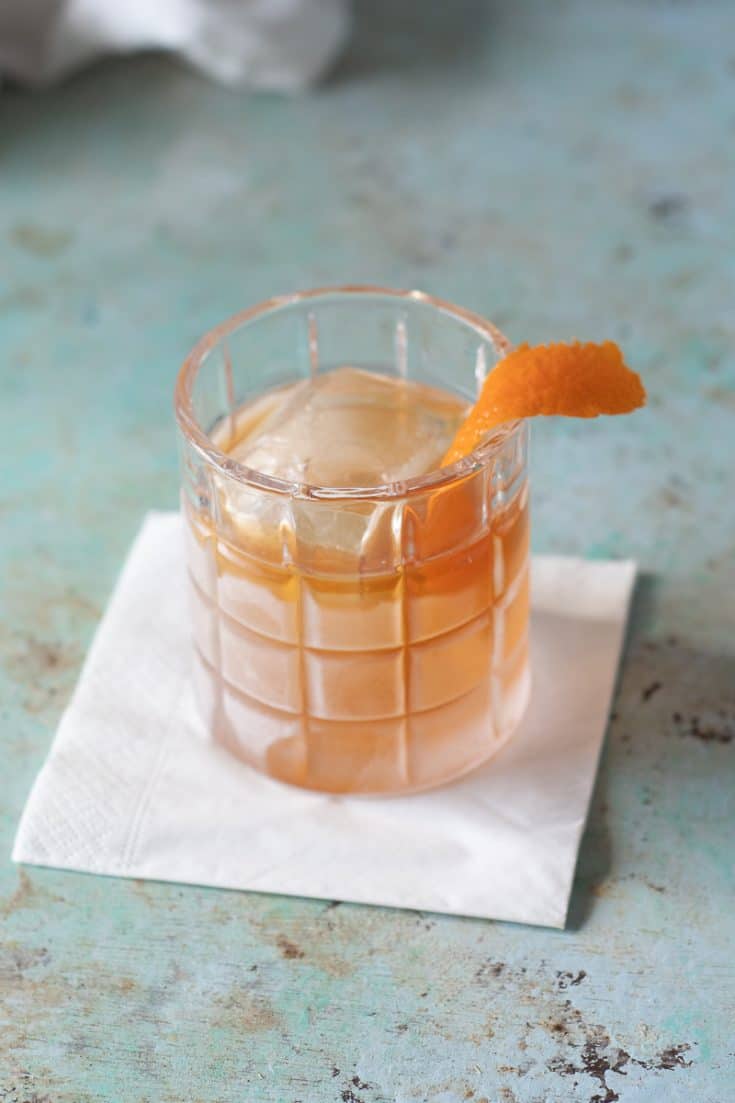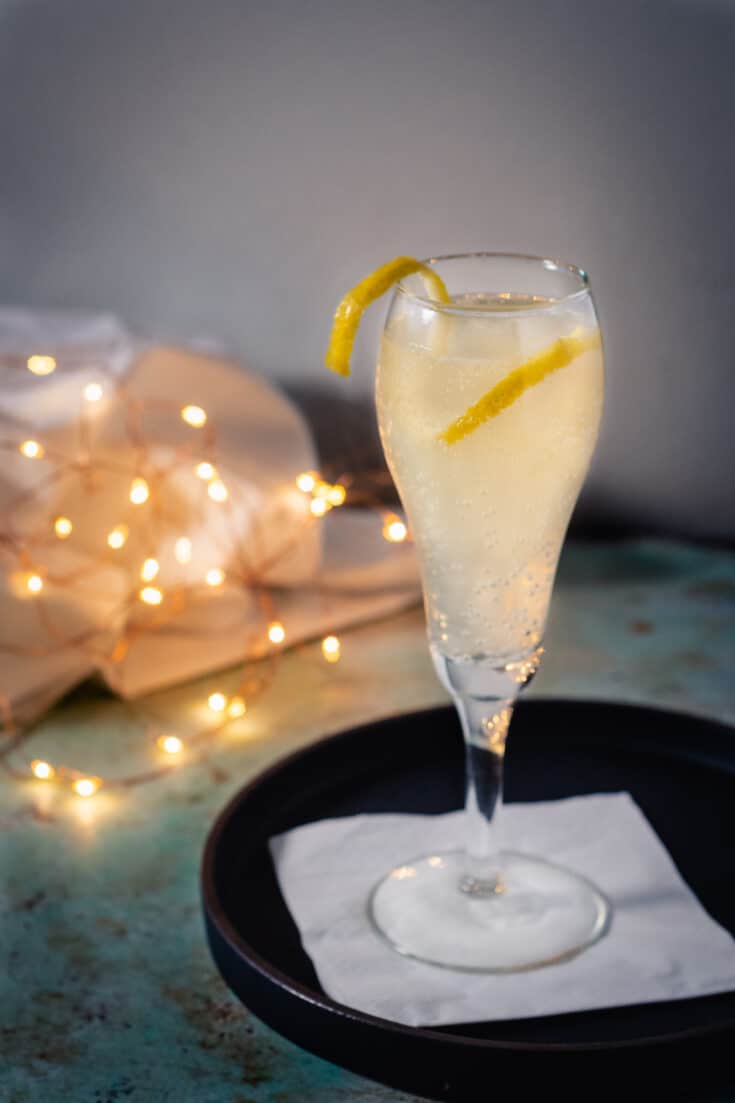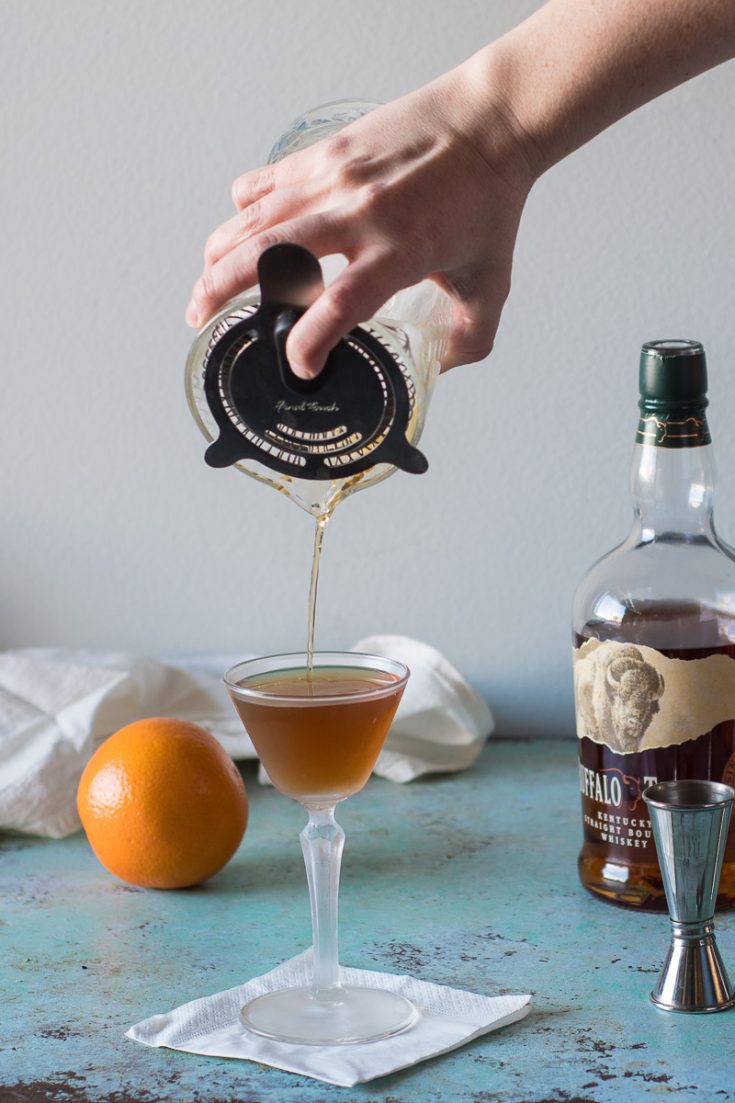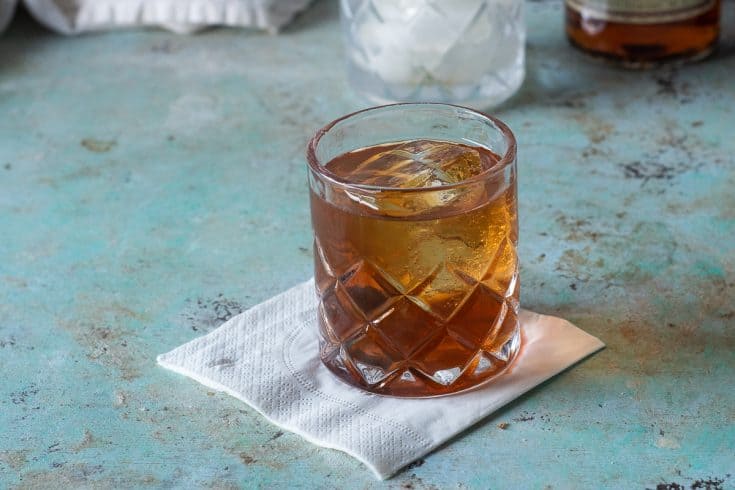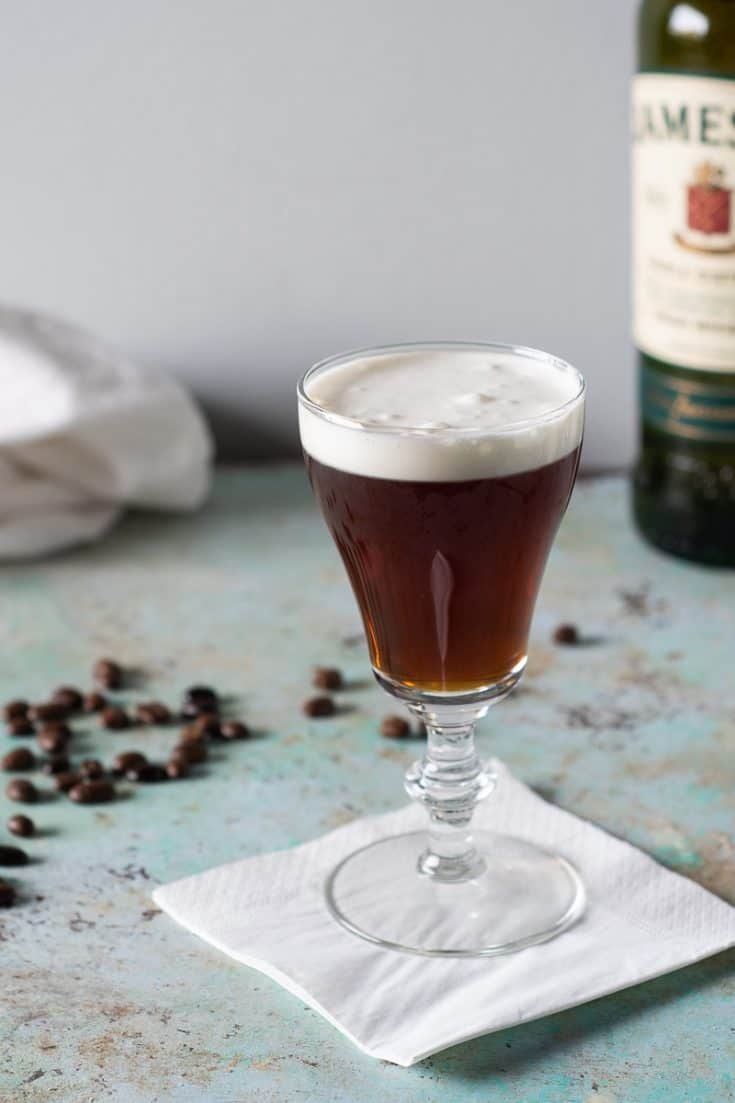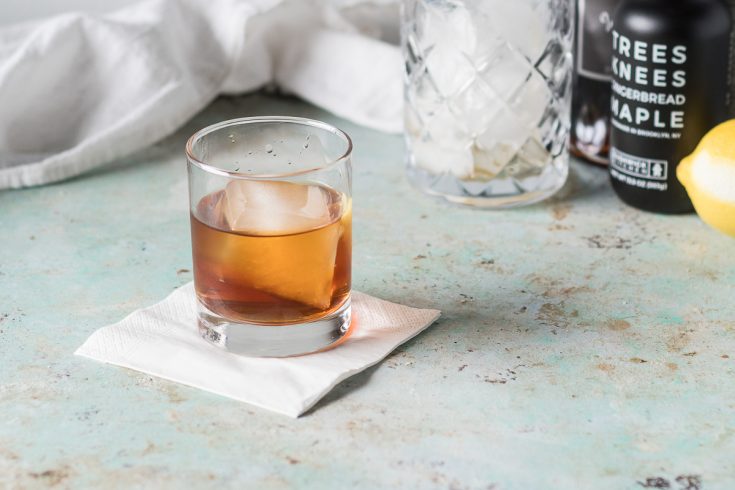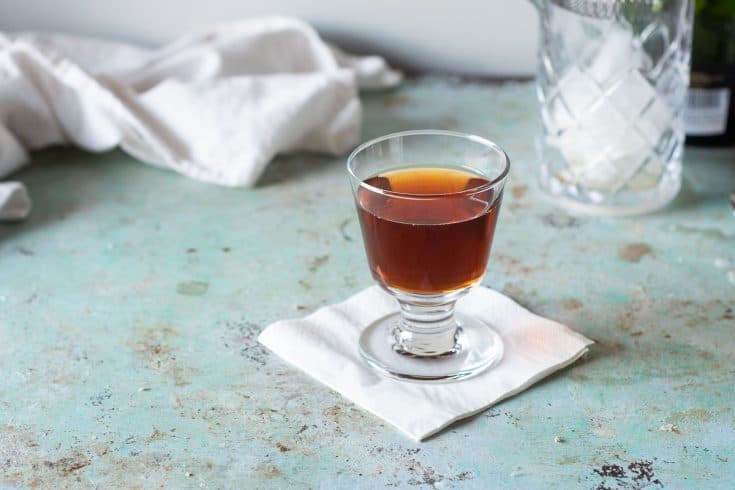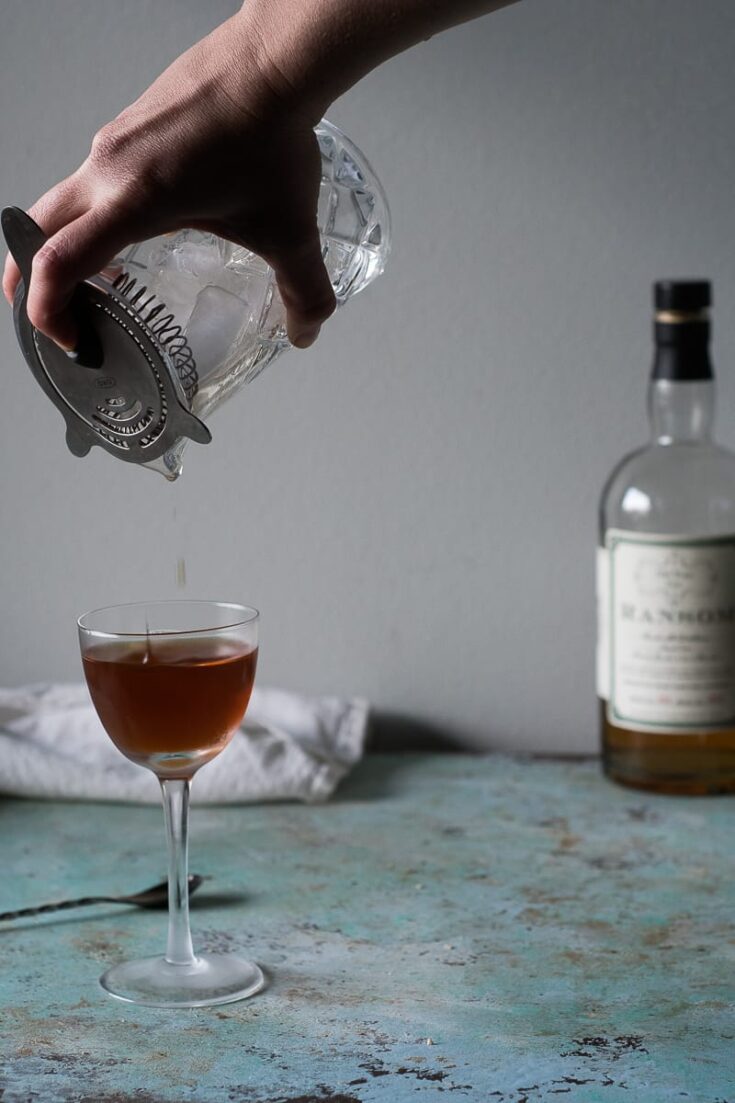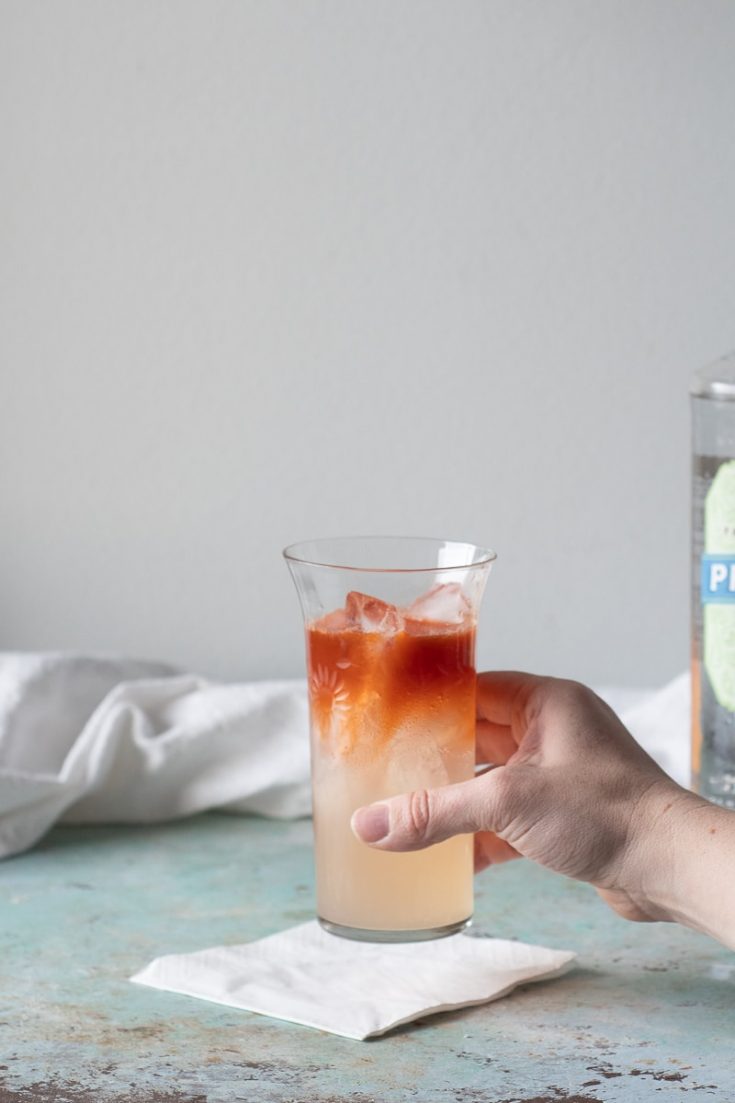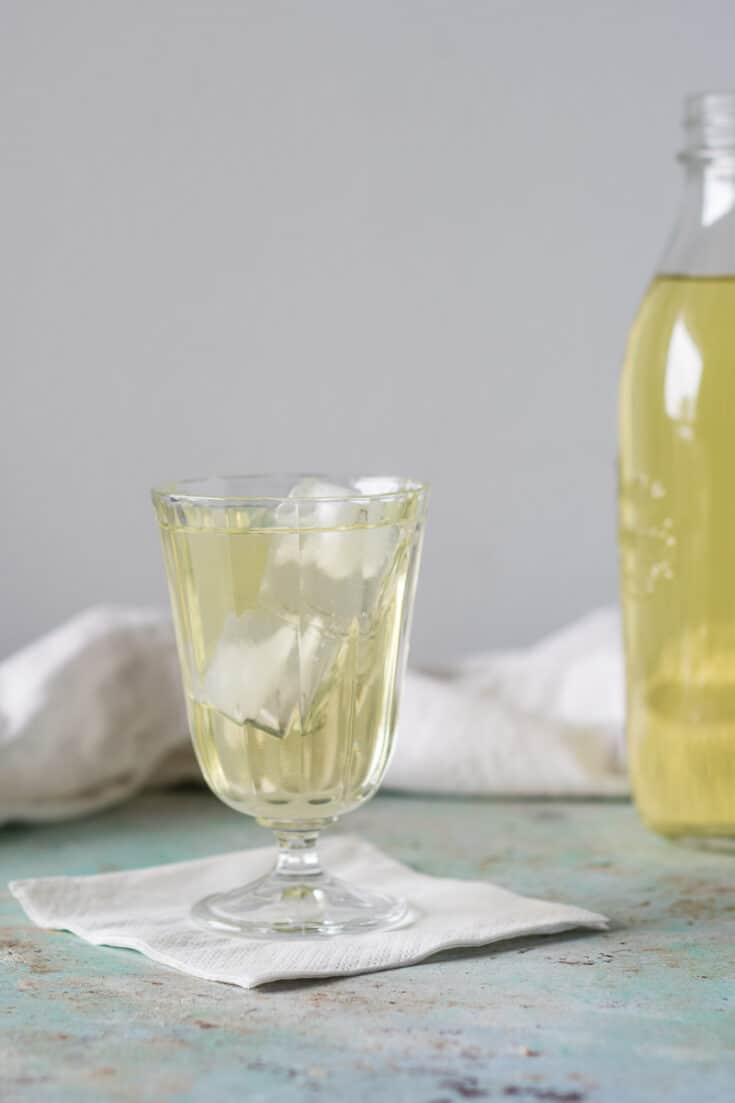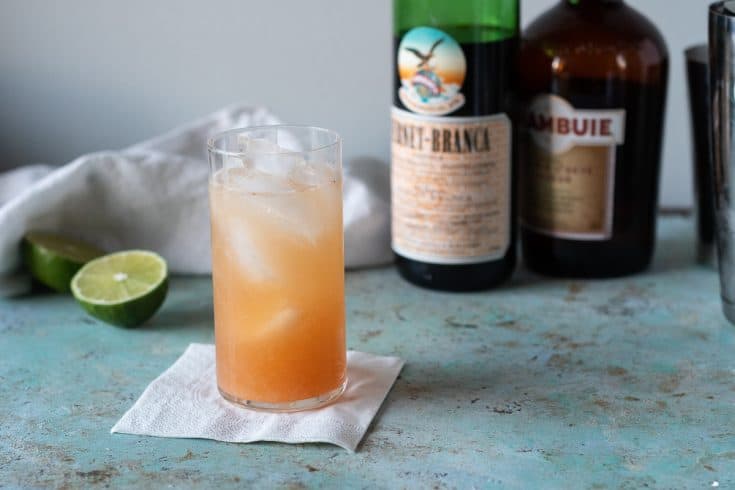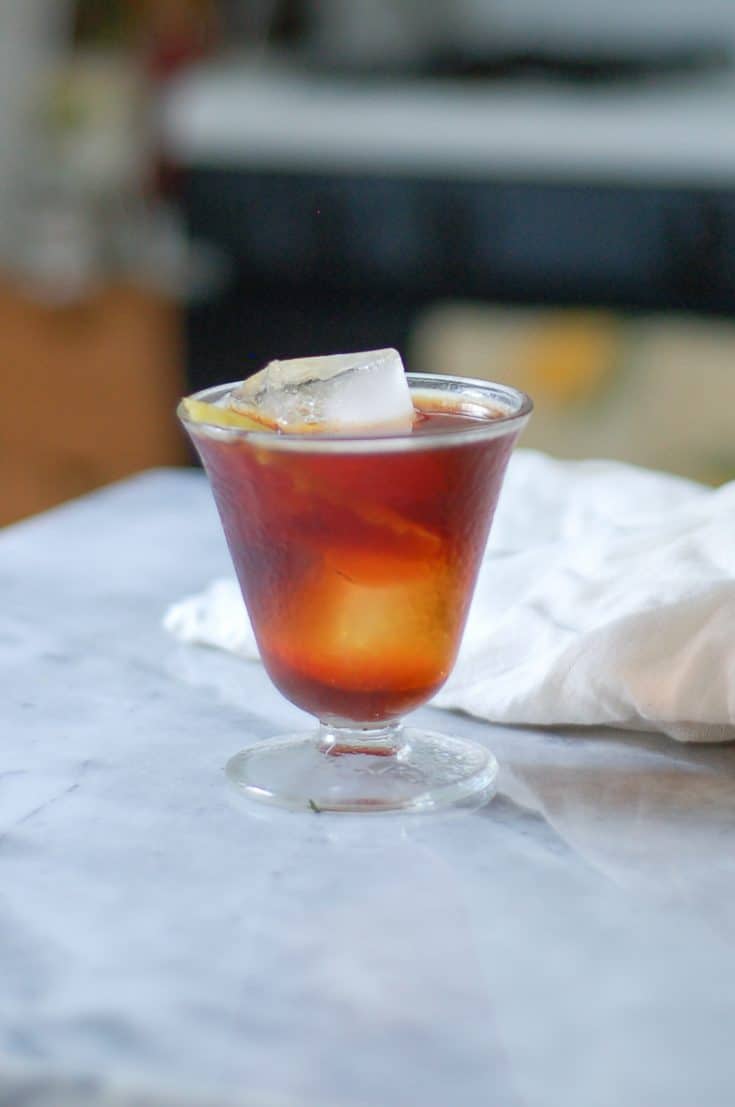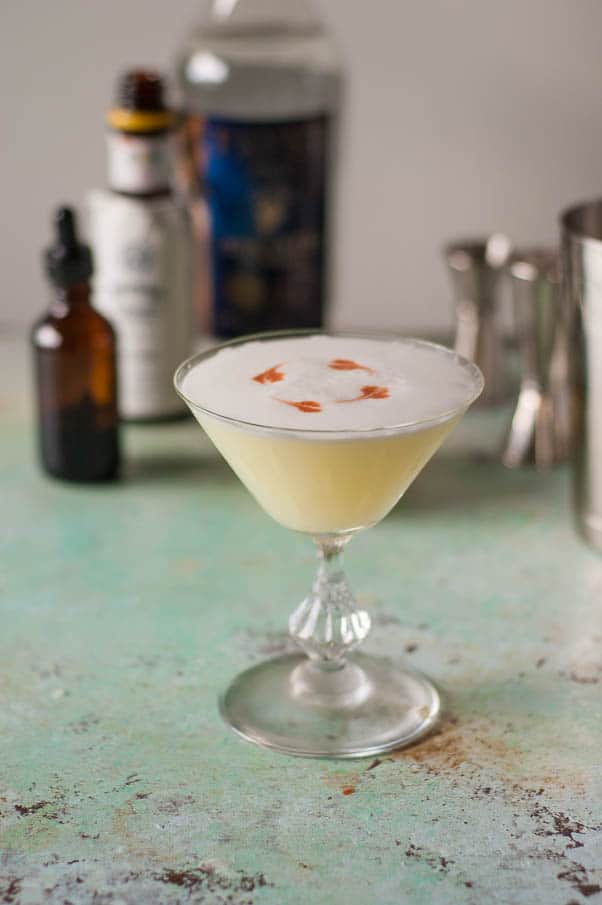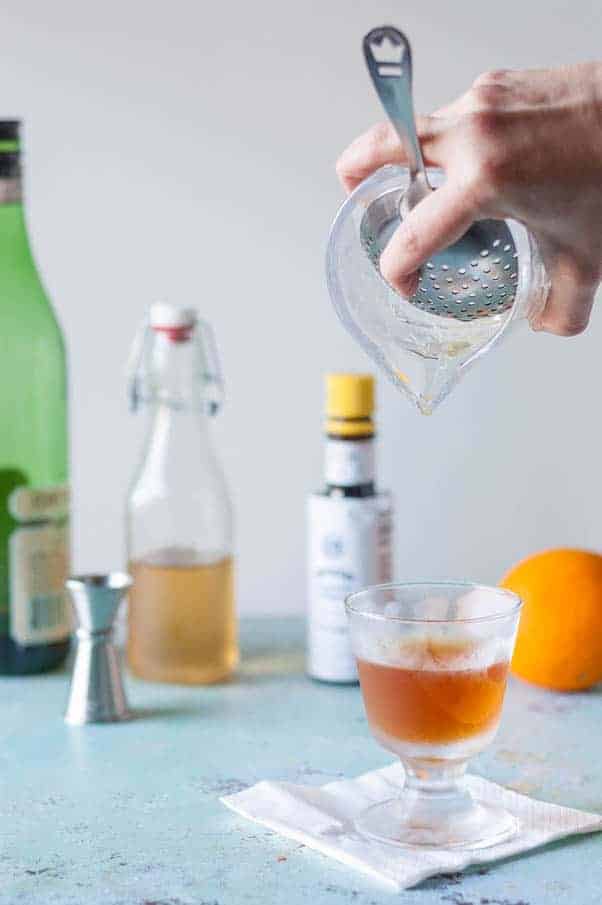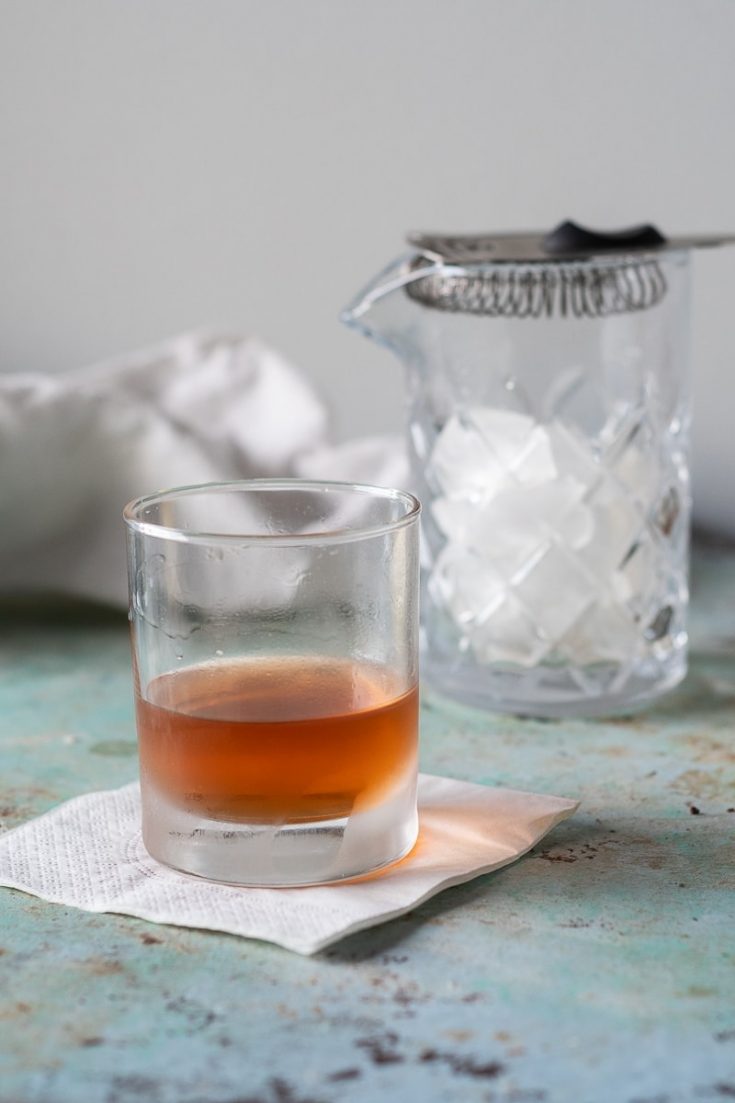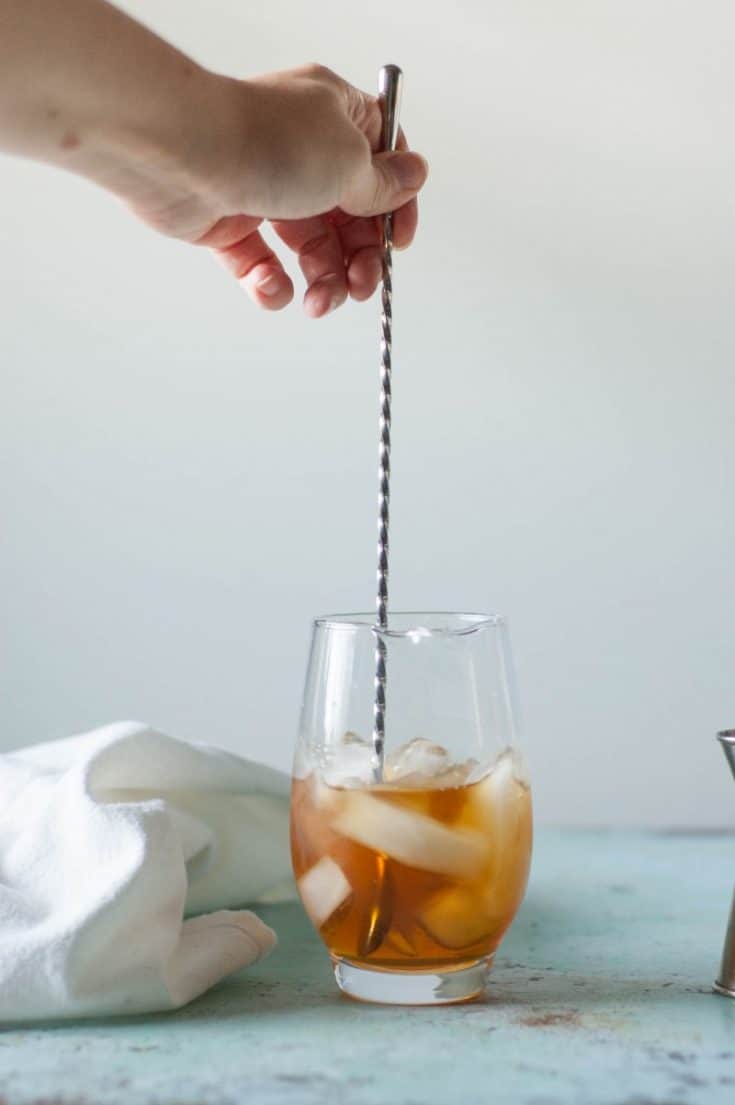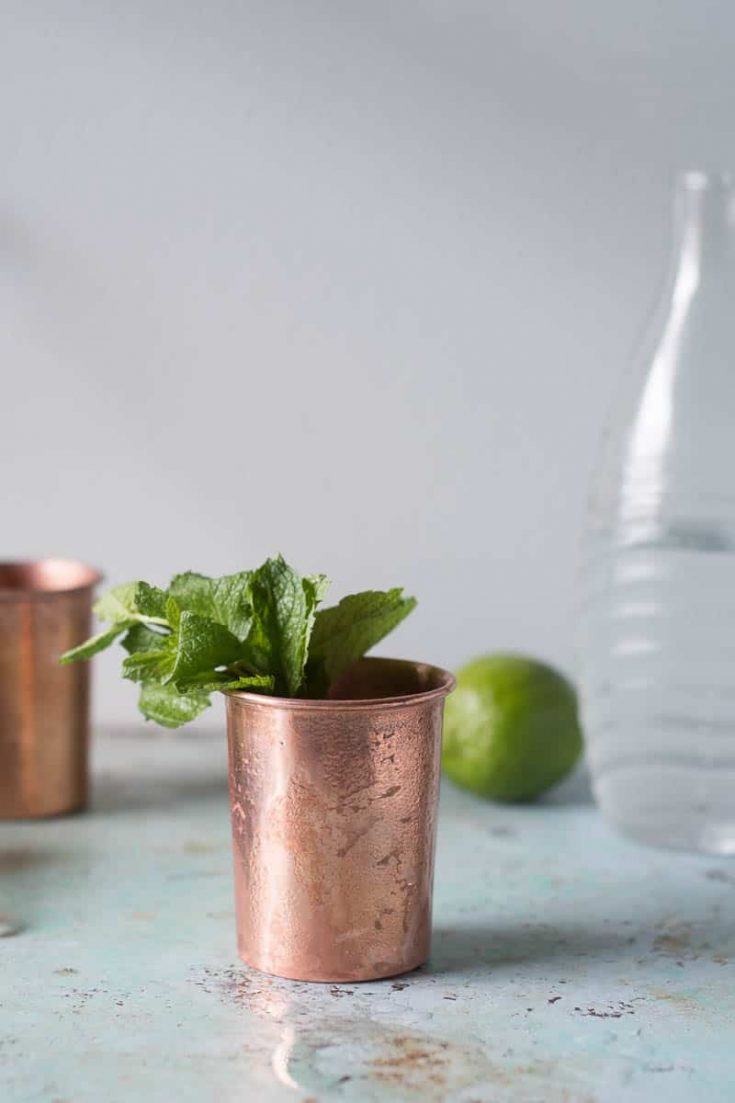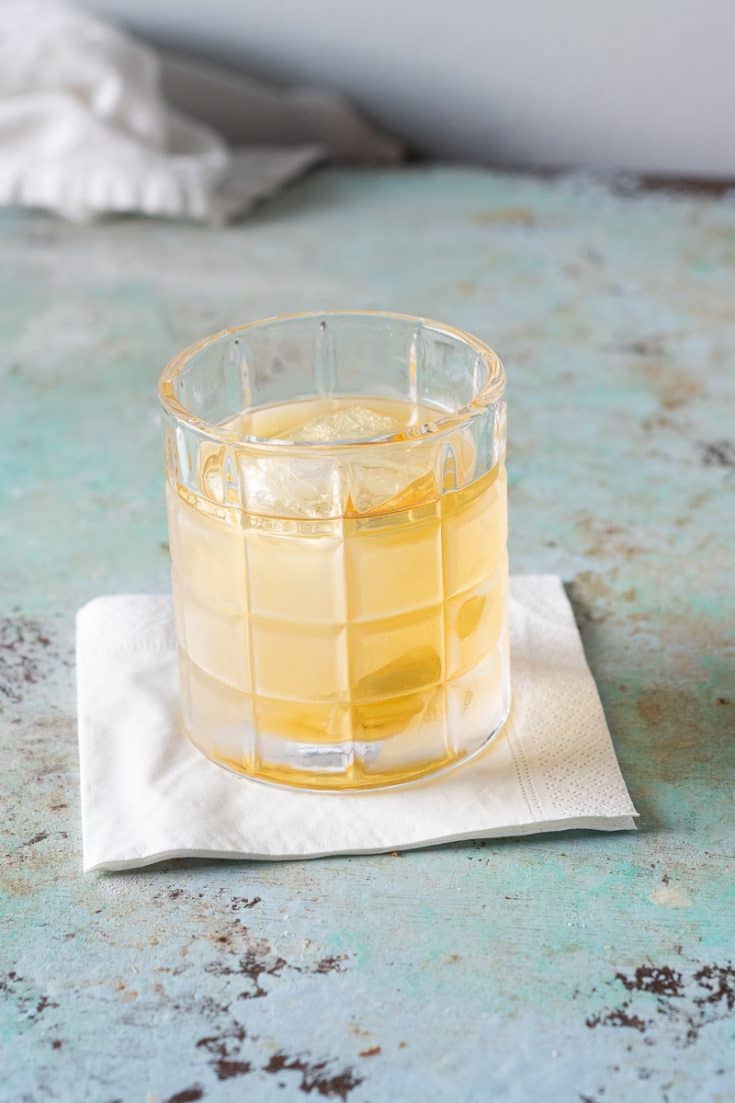I may earn from purchases through links in this post.
These fall and winter cocktails are welcome when the air turns cold.
I’m not fussy about what’s seasonally appropriate, and if you want a gin & tonic in the middle of November, go right ahead. But I tend to think of that as a quintessentially summer drink.
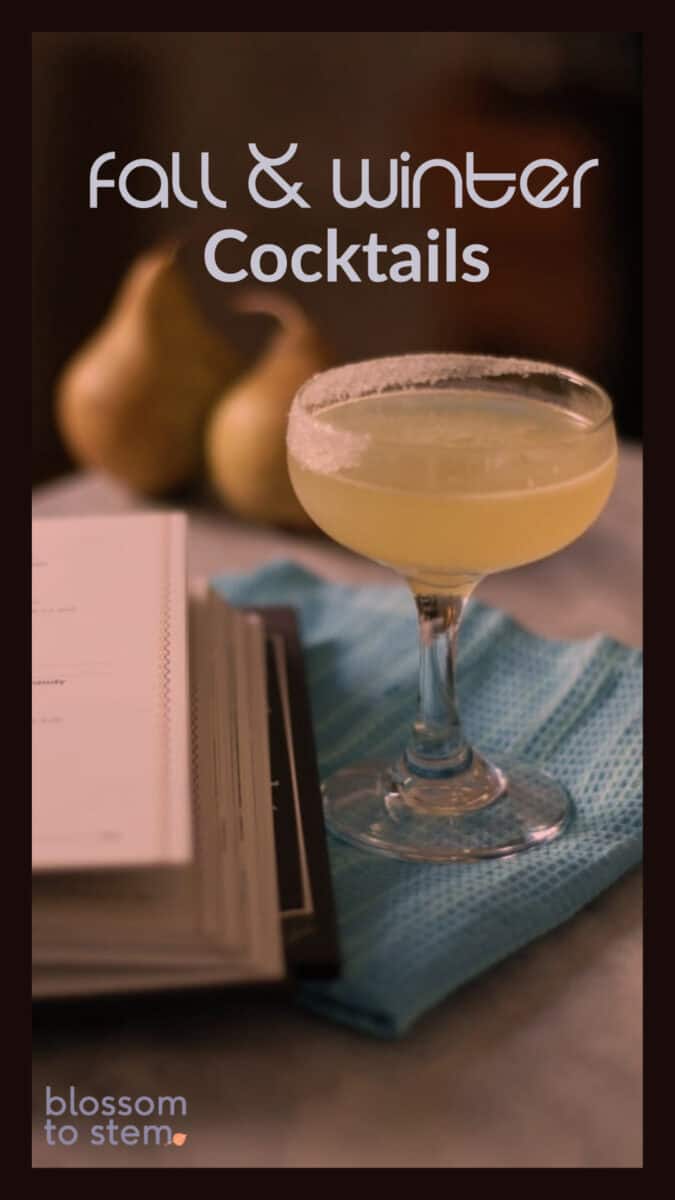
This collection tends toward darker hued liquors like bourbon and rum and even scotch, though it also includes some gin and even some bubbly.
There are crisp, cold drinks like the classic Martini and rich warm drinks like the Irish Coffee and so much in between.
May these offer some inspiration. Cheers!
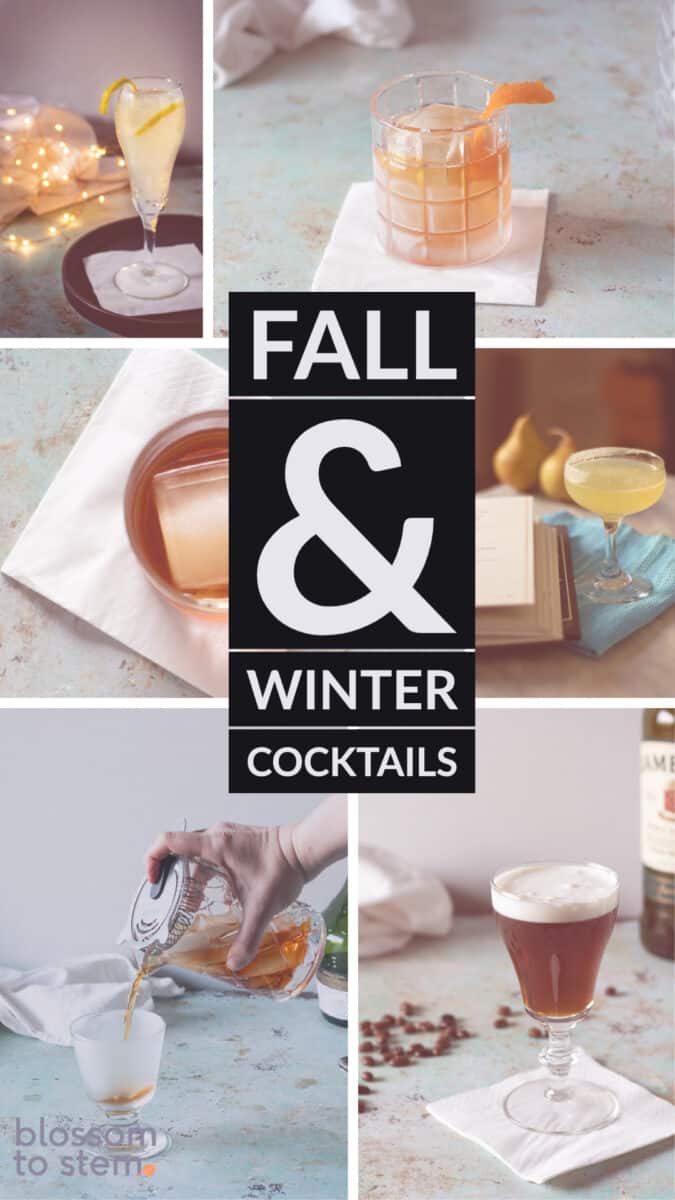
Fall and Winter Cocktails
A selection of cocktails for fall and winter. They embrace autumnal flavors like apples and pears. They tend toward richer profiles as opposed to lighter summer ones, but there's a place for winter citrus and brunch drinks, too. There are classics that are welcome in any season like the Dry Martini or an Old Fashioned. And a few of them are served warm. Cheers!
This cocktail with Cynar, Cognac, and Punt e Mes, is a riff on a Boulevardier, which itself is a riff on a classic Negroni. The herbal, bitter Cynar gets tamed by the rich Cognac and the sweetness of the Punt e Mes. It's a simple equal-parts cocktail for fans of amari. I like to use Maison Rouge VS for an easy to find, reasonably priced mixing Cognac (there are plenty of better sipping Cognacs but they get pricey).
This is a fruity, citrusy, sweet-tart cocktail that tastes like fresh pears. It’s a lovely and elegant drink for fall happy hours and gatherings. Meehan calls for Clear Creek Pear Brandy, which is excellent and is what I used here, but I’ve made it with other pear brandies and have been equally pleased with the results.
The Old Fashioned is really the original cocktail as it existed in the first half of the 19th century. If you're a purist, you can muddle a sugar cube with a teaspoon of water in lieu of using simple syrup here. In that case, serve the drink with a spoon, so you can stir the undissolved sugar. You can use bourbon or rye here, but bourbon is more common. Though I call for orange peel, lemon peel is also common. Feel free to use whichever you prefer.
The French 75 is a classic cocktail with Champagne, simple syrup, lemon juice, and gin or cognac (it's pictured here with gin). Proportions on the drink vary, so feel free to adjust to your liking.
Some bartenders prefer to serve it over ice in a collins glass. (If you swap in seltzer in place of the Champagne you basically have a Tom Collins.)
I prefer it served up (without ice) in the more elegant Champagne flute, but the choice is yours.
If you don't have simple syrup, you can dissolve a teaspoon of sugar with the lemon juice before making the rest of the drink.
I learned about this bourbon cocktail in Jeffrey Morgenthaler's excellent Bar Book. It comes from San Franciso bartender Jon Santer's time at Bourbon & Branch. It's a spirit forward cocktail for bourbon fans with subtle notes of coffee liqueur and garnished the oil from a flamed orange peel (which might be my favorite way to garnish a drink).
The Manhattan is a classic cocktail that features whiskey and sweet vermouth along with a few dashes of Angostura bitters. You can use either rye or bourbon, but I prefer rye for this. Look for a high proof whiskey for this. Rittenhouse, a 100 proof rye, is my go-to. My preferred sweet vermouth for this is Cocchi Vermouth di Torino. You can serve this up in a coupe glass with no ice, or as I have it pictured here, in a rocks glass with a big cube.
Irish coffee is the classic cocktail with hot coffee, Irish whiskey, and a float of gently whipped cream on the top.
You can adjust the amount of sugar from 1 1/2 teaspoons to 1 tablespoon, depending on how sweet you like your drink, but don't eliminate it entirely. It helps make the drink dense enough to prevent the cream from sinking.
While I won't tell anyone if you make this with bourbon or rye, if you want the classic experience, use an Irish whiskey here.
You can whip the cream ahead of time by pouring some into a mason jar, closing it tightly, and shaking for a few minutes.
This is a great spirit forward winter cocktail. Calvados is also known as apple brandy, and nocino is a walnut liqueur.
The Vieux Carré spirit-forward New Orleanian take on the Manhattan. It's a richer, more complex drink than classic the Manhattan. The base is split between rye whiskey and cognac, and in addition to sweet vermouth there is a splash of Benedictine and dashes of Peychaud's and Angostura bitters. This drink is especially nice with Pierre Ferrand cognac and Carpano Antica sweet vermouth (though some people think the vanilla notes in Carpano Antica are too overpowering and prefer a more straightforward sweet vermouth like Cocchi Vermouth di Torino). It's often garnished with a lemon twist. I usually skip that, but feel free to add it if you like.
This cocktail is a regular one around these parts. It is a spirit-forward drink that’s perfectly balanced. Old Tom gin is making a comeback for a good reason. It’s sweeter and more full-bodied than the popular London dry style gins like Beefeater. This isn’t a place for Plymouth or Bombay Sapphire. I recommend Ransom Old Tom gin, an Oregon gin that is aged in pinot noir barrels, but I’ve had the drink made with Hayman’s Old Tom gin and enjoyed it that way as well. (Michigan’s Journeyman Distillery’s Bilberry Black Hearts Barrel Aged gin is not technically an Old Tom style, but the barrel-aging makes it work well in a drink like this.) Use any sweet vermouth you like. A big-flavored vermouth like Carpano Antica or Vya is especially lovely in this drink.
This drink is a pretty one featuring Prairie Organic Gin, sweet-tart grapefruit, orange liqueur, bubbles, and a layer of deep red Angostura bitters over the top. A light, bubbly, citrusy drink with some warm baking spice flavor from the bitters.
Spanish coffee is a cocktail that originated in Portland, Oregon in the 1970s at Huber's Cafe. It remains popular in the Pacific Northwest, but hasn't spread far beyond that, which is a shame, because it's both delicious and fun to make. My version is adapted from Jeffrey Morgenthaler's excellent Bar Book. You need to make sure you have a tempered glass with a stem to hold onto (a standard wine glass should be fine, but no rocks glasses unless you also have fireproof bionic hands). You need a 151-proof rum (also called overproof rum) which you set on fire and use to caramelize the sugar around the rim of the glass. Morgenthaler moistens the rim of the glass with a lime wedge, but I typically just use water because I don't think the lime flavor comes through and I find it more convenient. You can use any coffee liqueur you like. Morgenthaler uses Kahlua, which is probably the sweetest of the widely available coffee liqueurs, but I think the drink also works well with Tia Maria and coffee liqueurs from smaller producers.
Clarified milk punch is different from more common creamy milk drinks like eggnog. This is an English milk punch where the milk is curdled with citrus and strained to make a clear drink with a silky mouthfeel. I like to use a mix of rums here--a white rum, an aged dark rum, and a bit of Smith & Cross--but you can use a white rum or an aged dark rum for all of the rums in this recipe (Smith & Cross is too assertive to use on its own here). Don't break the bank on a cognac for this. And note that the Batavia Arrack is significantly mellowed in the clarification process. This is a drink that goes down easy. Please use whole milk here. Alternative milks won't produce the same results.
This tiki drink is fruity but not too sweet. The sweetness of the pineapple is balanced with the sour of the lime juice and the herbal notes from the Fernet Branca. To make fresh pineapple juice without a juicer, you can puree pineapple chunks in a blender and then strain out the pulp with a fine mesh strainer. For squeezing limes, this is my weapon of choice. I prefer shaking drinks in a two-piece metal shaker, which is so much easier to open than the three-piece cobbler shakers you may be more familiar with.
This low-alcohol cocktail was originally developed by Stephen Cole at Chicago’s Violet Hour. It is on the bitter side of the spectrum, but it’s not an exceptionally bitter drink. It’s herbaceous and complex. The bitter Cynar gets held in check by the sweetness from the vermouth and the sour from the lemon juice. Sanders calls for Carpano Antica sweet vermouth, but lately I’ve been making it with Cocchi Vermouth di Torino. I think Vya sweet vermouth would also be lovely here. For the orange bitters, I recommend Regan’s Orange Bitters No. 6 or Angostura Orange Bitters over Fee Brothers (if you have some other less common orange bitters you like, feel free to use those).
This drink is frequently made with lemons or limes. I prefer limes here. If you’re nervous about using raw egg white, you can always go with pasteurized eggs. The texture here is light and frothy and foamy, a bit like meringue. Some people make this with 3 ounces of pisco, but I think that’s too much. I’ve opted for 2 ounces here, which makes a balance I prefer, but you can do what you like. I’ve always made this with Angostura bitters, because I always have those on hand, but Amargo Chuncho bitters are more traditional. You could also go with your favorite variety of aromatic bitters if you’re the kind of person who has a favorite variety of aromatic bitters.
This riff on the Old Fashioned is made with Canadian whiskey or rye, but I think it’s better with rye. I like Old Overholt, which is pictured here, and is a reasonably priced old standby when it comes to rye, but this would be a nice place to show off a higher end rye if you have it. There are other Fernets out there, but I’ve only ever made this with the classic Fernet-Branca. If you want to get fancy, you can garnish this with a flamed orange twist.
The Sazerac is a classic New Orleans drink that was originally made with cognac, but is now typically made with rye whiskey. It's a bracing, spirit-forward drink for people who really love the taste of rye. It's a rinse of absinthe (you can also use Herbsaint), a mix of rye, simple syrup, and Peychaud's bitters, and a twist of lemon peel expressed over the glass. I like to use rich simple syrup here which is a 2:1 mix of sugar and water because it adds a little body to the drink. If you're a fan of cognac, you might try using half cognac and half rye for a nice, split-base variation. I like to use a rye on the lower-proof side (80-90) rather than one in the 100-proof range for the right balance in this one. (If all you have is a high proof whiskey, consider stirring it for a few more seconds to add some dilution to tame the heat.)
This drink is tart, light, and refreshing. It makes a great pre-dinner or brunch drink. Aperol is an Italian amaro that’s similar to Campari, but much milder with notes of bitter orange, rhubarb, and herbs. Use any gin you like here. I particularly like this drink with a gin that is heavy on the floral botanicals. Hendricks is a good widely available option, but a classic London Dry style gin like Beefeater would also be nice here. You could even leave the gin out entirely for an even lower alcohol drink. As I’ve mentioned before, my favorite kind of shaker is the two-piece metal kind, and I swear by a squeezer like this one for juicing lemons and limes.
This classic cocktail dates back to the turn of the 20th century. It’s a less-sweet variation on the famous Manhattan. The original version calls for Amer Picon, which is as of this writing is still unavailable in the U.S. and, regardless of availability, the modern stuff is very different from the original formula.
There are plenty of potential substitutions, and if I were running a bar I would probably make a house version of Amer Picon, but my favorite workaround for home is simply the widely available Ramazzotti amaro and orange bitters.
[Update: Since I wrote this, I've discovered the wonderful Bigallet
China-China, which is also an excellent Amer Picon substitute. If you're using that, you can pull back on the orange bitters.]
The proportions here are slightly different from the classic, but I like the balance.
I know there are a range of preferences when it comes to this drink. So, if you know what you like, make it your way!
"Dry" originally referred to making a Martini with dry rather than sweet vermouth, but has since come to mean a drink with a higher ratio of gin or vodka to dry vermouth.
I particularly like a gin Martini with Plymouth gin and Dolin dry vermouth, but any London dry or Plymouth style gin will work. For a vodka Martini, Absolut or Belvedere are good options, and again, I like them with Dolin.
It's worth noting that Noilly Prat is the classic dry vermouth for the Martini, and there's a whole world of interesting dry vermouths available to play with if you're so inclined.
But whatever vermouth you use, be sure to refrigerate it after opening.
I call for a 5-to-1 ratio of gin or vodka to vermouth here, but anything from 2-to-1 to 7-to-1 is in the common range for a Dry Martini.
This Mezcal Mule is a variation on the classic Moscow Mule, which is traditionally made with vodka. I love the smoky quality mezcal brings to the combination of ginger ale and lime, but you could certainly use another spirit here (honestly anything from gin to whiskey to rum will be good here) if you like. If you're interested in trying mezcal, Del Maguey Vida is a good affordable brand. Use any ginger ale or ginger beer you like (I'm a fan of Fever Tree, Fentiman's, and Q). Or, if you've made my homemade ginger syrup, use 1 1/2 ounces ginger syrup and 3 ounces of soda water. Please use fresh-squeezed lime juice and not the bottled stuff here. The mint is pretty and smells nice, but it's totally optional.
The Rusty Nail is simple, two-ingredient cocktail with blended Scotch and Drambuie. Drambuie is a Scotch-based honey-herb liqueur that's quite sweet on its own.
Traditionally, the was made with equal parts Scotch and Drambuie, but most people find that too sweet these days.
My preference is for the 2 ounces Scotch and 1/2 ounce Drambuie listed here, but if you tend to prefer drinks on the sweeter side, up the Drambuie to 3/4 ounce.
Use a good blended Scotch here, like Monkey Shoulder, Johnnie Walker Black, or Dewar's 12 Year. (This isn't a good place for a single malt like Laphroaig 10.)

